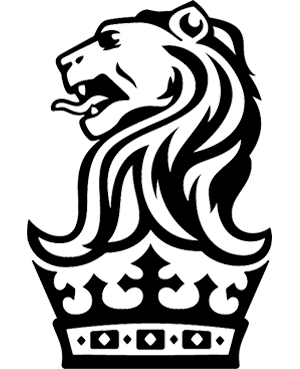Tags
#Problem resolution
Turn unhappy customers into raving fans
Chick-fil-A employees turn bad experiences into a positive ones by making sure that customers are HEARD:
- Hear. Listen intently and focus on what is being said. Don't interrupt—even if what the customer says doesn't reflect what actually happened.
- Empathize. Recognize what just happened and seek to understand the customer's perspective. Make the situation not about you, but the customer.
- Apologize sincerely. Customers don't care about your organizational challenges. Don't make excuses but accept responsibility. Most times that's all that is needed.
- Resolve immediately. Take ownership of resolving the issue, even if you did not cause it. Don't pass it off for someone else to fix.
- Delight. First, thank customers for bringing problems to your attention. Let's face it, if they didn't speak up, you would never have known there was an issue. Then, go the second mile and do something nice and unexpected for them. Some Chick-fil-A owners, after receiving a negative comment on a survey, personally call customers to apologize and invite them back for a second chance, and a free meal.
Treat problems as opportunities
The Ritz-Carlton uses the LEARN model to treat any bad experience as an opportunity to create a great one.
- Listen and Empathize. Never crack jokes or laugh, no matter how ridiculous the complaint sounds.
- Apologize. It doesn't matter whether you caused the problem or not, take ownership of it. Use the words 'I'm sorry' and 'forgive me'—never use 'We're sorry' or 'forgive them.' Also, don't try to deflect the issue by explaining policies and guidelines, or explaining how a particular system works. The guest doesn't care.
- Resolve the problem quickly and to the guest's choosing. Don't just assume that a guest wants monetary compensation. Let the resolution be determined by the guest. Most times they just want to know they have been heard.
- Notify your team and follow-up with the guest. Write the guest a note or give the guest a follow-up phone call to see if everything is okay and if anything else can be done. Let other staff know of the problem too, so they can be aware and learn from it.
Create a continuous improvement system to battle MR BIV
Problems, mistakes, and defects will always occur but The Ritz-Carlton trains and encourages every employee to spot, report, and help solve these MR BIV sightings right away.
MR BIV (an acronym for Mistakes, Rework, Breakdowns, Inefficiencies, and Variations) is The Ritz-Carlton's way of continually trying to improve their systems.
Once a MR BIV has been identified, it's important to determine if the problem is a symptom of something larger. Staff begin by asking themselves 'Why' as many as five times to find the root cause, and then a permanent solution. For example, one Ritz-Carlton property was having problems with room service being late, so employees took it upon themselves to start asking 'Why.'
- Why? Answer: Waiters are waiting a long time for an elevator.
- Why? Answer: Elevators were being held up by the houseman.
- Why? Answer: The houseman was collecting linens from one floor to take to another.
- Why? Answer: There was a shortage of linens.
- Why? Answer: Linen inventory was cut to 80% occupancy.
- Solution: Order more linens.
But be careful to always receive MR BIV with open arms and a curious mind. Attacking or blaming employees for problems will only lead to them never helping you find a MR BIV again.
Don't use scripts or techniques
Southwest has learned that there are no catch-all scripts or techniques that can effectively deal with a wide variety of customers—what one customer expects may annoy another. Also, by defaulting to a script or technique, interactions become "nothing more than a sophisticated method of manipulating people to act in ways that accomplish organizational objectives."
Instead, Southwest's philosophy is to allow staff the freedom to create highly individualized experiences with a high dose of personal attention. Former CEO Colleen Barrett would tell staff that “I am never going to call you and ask you why you did too much for someone, but I will likely call you and ask you why you didn’t do enough.”
Turn unhappy customers into loyal fans
To Starbucks, negative experiences are considered opportunities to strengthen their relationship with unhappy customers and learn from them on how to make the Starbucks Experience better. In what is referred to as the 'LATTE Method', partners are trained to:
- Listen to the customer. Recognize the signs that a customer is upset, whether it is tapping their foot or crossing their arms, and then engage with them to see what's wrong.
- Acknowledge the problem/situation.
- Take action and solve the problem. Either they can solve the problem or look for an alternative solution. Saying no is never an option.
- Thank the customer. Make sure unhappy customers know they are valued by thanking them for their business and then listening to and recognizing their problems.
- Explain what you did. Never hide behind store policies but take the time to explain why the problem has occurred.
Have a plan in place for when things go wrong
While an Umpqua Bank store manager was waiting for facilities to come out to fix a broken drive-thru lane, CEO Ray Davis challenged the manager on why he wasn't turning this pain point for customers into the best customer experience they had ever received.
For moments like these, Ray has managers be proactive by working with their staff to brainstorm a list of things they can do to wow customers if something goes wrong and then hold them accountable to take action. This list includes:
- Handing out free soft drinks
- Depositing an extra $10 into a customer's account
- Washing their windshields
- Sending customers flowers or cookies
Even when Umpqua receives complaints through social media, they contact customers directly to apologize and encourage them to call Umpqua to address the problem. They then connect with the customer's local store to send out a personal hand-written note or a gift.




